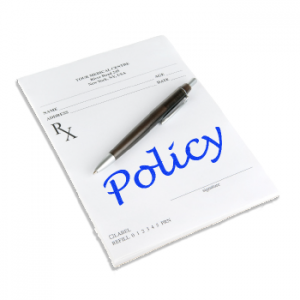 Half of all Americans in a recent Gallup Poll had a somewhat negative or very negative view of the pharmaceutical industry.1 With the actions of executives like Martin Shkreli (the founder of Turing Pharmaceuticals who drew heavy criticism for instituting large prince increases on Daraprim), drug shortages ranging from atropine to vecuronium, and the unacceptably high prices of older medications such as colchicine, who can blame them?2 Large majorities of Americans agree that the pharmaceutical industry’s prices are too high, that their profits are too large, and that there are many ways to curb these costs.3
Half of all Americans in a recent Gallup Poll had a somewhat negative or very negative view of the pharmaceutical industry.1 With the actions of executives like Martin Shkreli (the founder of Turing Pharmaceuticals who drew heavy criticism for instituting large prince increases on Daraprim), drug shortages ranging from atropine to vecuronium, and the unacceptably high prices of older medications such as colchicine, who can blame them?2 Large majorities of Americans agree that the pharmaceutical industry’s prices are too high, that their profits are too large, and that there are many ways to curb these costs.3
Explore This Issue
ACEP Now: Vol 37 – No 06 – June 2018Some of these broader solutions that are supported by a majority of Americans include allowing the federal government to negotiate pharmaceutical prices for Medicare Part D beneficiaries, making it easier for generics to enter the market, allowing importation of less-expensive drugs from Canada, and eliminating some pharmaceutical advertising, such as the direct-to-consumer ads, which arguably increase patient demand for medications they may not even need.
Even though pharmaceuticals make up only about 10 percent of overall health care costs, they represent one of the most rapidly rising sectors for health care cost growth. Thus, it is imperative that we act now before drug costs swallow the remaining slices of the health care pie. Unlike physician Medicare costs, which arbitrarily could come crashing down due to price controls via sequestration rules and/or payment reform, there is no immediate check to the rise of pharmaceutical prices. Historically, drug companies have only been subject to what the market will bear.
A recent article on the Emergency Medicine Residents’ Association website, reprinted below with permission, discusses why pharmaceutical prices are so high and offers solutions that even the clinician at the bedside can undertake to fight the war on drug prices.
 Dr. Dark is assistant professor of emergency medicine at Baylor College of Medicine in Houston and executive editor of PolicyRx.
Dr. Dark is assistant professor of emergency medicine at Baylor College of Medicine in Houston and executive editor of PolicyRx.
References
- Healthcare system. Gallup website. Accessed May 23, 2018.
- Current drug shortages. American Society of Health-System Pharmacists website. Accessed May 23, 2018.
- Public opinion on prescription drugs and their prices. Kaiser Family Foundation website. Accessed May 23, 2018.
Physicians Can Take Steps to Limit Pharma Price-Gouging
The cost of prescription drugs in the United States is constantly in the news, with the public becoming aware of increasing prices for off-patent drugs from the obscure Daraprim (up almost 5500 percent overnight from $13.50 to $700 per capsule) to the universally known epinephrine (up almost 550 percent from $94 in 2007 to $609 in 2016 for a set of two EpiPens).1,2
Pages: 1 2 3 | Single Page





No Responses to “Ideas for Combating Pharma Price Gouging”